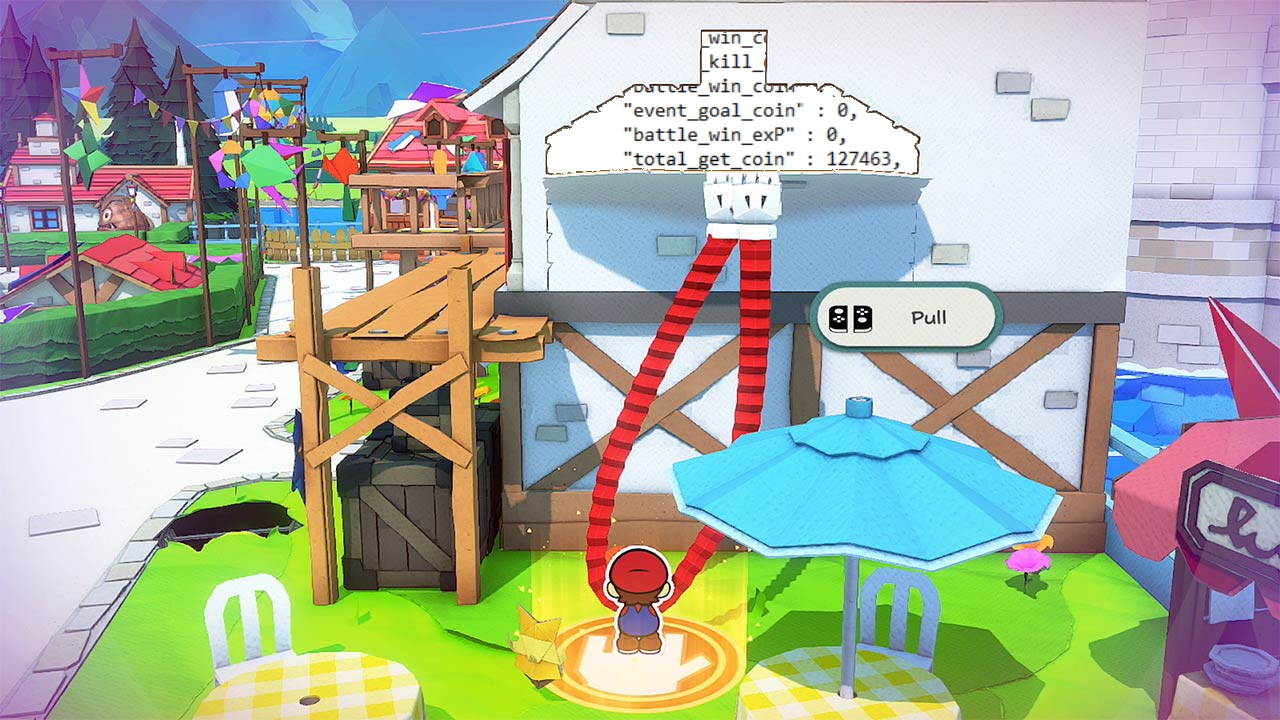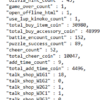
Paper Mario: The Origami King producer Kensuke Tanabe has revealed that the series had been moving away from its RPG roots, only for data miners to find a reference to experience points in the game’s files.
Some fans of the series had taken issue with how ever since Paper Mario: Sticker Star, there seemed to be less variety in the designs of characters and NPCs.
The first game, Thousand Year Door, and Super Paper Mario had the Toads and other classic Mario characters in unique costumes, along with entirely new races to the Mario universe.
However, in Paper Mario: Sticker Star, all Toads looked identical. Fans found that Color Splash featured more “generic” Toads, and the standard staple of Mario characters in their usual designs. This likely aided the mixed and luke-warm reaction gamers had to both titles [1, 2].
The “generic Toad” has almost become a symbol of the issues fans have with the modern Paper Mario games- accusations of simplified stories and moving away from being a true RPG- compared to the extremely positive reception of prior games [1, 2, 3].
As previously reported, this only grew worse after comments made by Tanabe during an interview with Video Games Chronicle (VGC). Therein, Tanabe stated “it’s no longer possible to modify Mario characters or to create original characters that touch on the Mario universe.” You can find the full statement below.
VGC: “Mario is famous for its iconic cast of villains. Can you talk about the new villain in this game and how you design a character to stand alongside all-time greats like Bowser and Kamek?”
Tanabe: “Since Paper Mario: Sticker Star, it’s no longer possible to modify Mario characters or to create original characters that touch on the Mario universe. That means that if we aren’t using Mario characters for bosses, we need to create original characters with designs that don’t involve the Mario universe at all, like we’ve done with Olly and the stationery bosses.
Whether a character becomes an all-time hit or not isn’t up to us on the development side; I think it’s more the case that characters that fans truly accept naturally end up that way. I hope that the origami siblings in Paper Mario: The Origami King will stay in players’ memories, even if they do only end up appearing in this title.”
We also reported how Tanabe also took part in an interview with Games Radar. There, Tanabe explained again that there was a limit on how the Toads could be designed. However, he then focused on the importance of the game’s writing to make them more memorable.
Games Radar: “It’s so lovely to see that The Origami King continues the series’ trend of dialling in on humour. A lot of the humour comes through in your interactions with NPCs in the world and the companions that will follow you on your journey, so how did you approach that with regards to returning favourites and new characters like Olivia?”
Tanabe: “From the production of Paper Mario: Sticker Star onwards, we were no longer able to graphically represent individual characteristics, such as age, gender etc., in the Toad NPCs (non-playable characters), and so it has become that much more important to convey their personalities simply through text. Our writer, Mr Taro Kudo, has been grappling with this difficult challenge since Paper Mario: Sticker Star, but has managed to achieve giving all the texts a sense of humour. In this instalment [sic], Paper Mario: The Origami King, we were able to include some Toads wearing an outfit to match their role, and also created original origami characters.”
Now, Tanabe has spoken to Eurogamer Germany. When asked why The Origami King had less RPG elements, Tanabe explained it had been their goal since Paper Mario: Sticker Star. This was to differentiate it from the Mario & Luigi RPG games (from AlphaDream, which went defunct in late 2019).
Eurogamer: “In the series history, the first two games are the most popular and these two have the most RPG elements. Origami King is not approaching this again. Why is that?”
Tanabe: “One of our goals in creating Paper Mario: Sticker Star was to move away from the traditional RPG style. Nintendo has another RPG series in which Mario is the main character. We wanted to differentiate ourselves from this by positioning our game as an adventure game with a focus on solving puzzles. Even if we have kept this direction so far, we have not yet decided whether or not we will change it in the future. However, my personal opinion is that I would like to keep making Paper Mario games that are both innovative and unique.”
Eurogamer: “Following on from that: How do you develop a series further when so many fans want a return to familiar elements? Talk about how Origami King is an advancement.”
Tanabe: “The game development philosophy that I took over from Mr. Miyamoto aims to develop innovative and unique game systems. I am not against the opinions of the fans. However, I consider my game development philosophy to be independent of that. If we kept using the same game system that the fans want, we wouldn’t be able to surprise them or offer them new gaming experiences. We always try our best to find new ways to surpass expectations in surprising ways. At the same time, however, there is no guarantee that we will always succeed – so this is a real challenge.”
Translation: Goggle Translate
While the traditional RPG elements of parties and characters lined up against one another were not in The Origami King, it seems some elements may have persisted early in development.
Gaming Reinvented reports that data-miners from the Mario RPG Central Discord server have discovered a reference to experience points in the game’s code; specifically how many points were won from battles.
Among the rumors of remakes of Super Mario games for the franchise’ 35th anniversary, there were claims of a new Paper Mario game that went back to its RPG roots. While this was later proved to be false, it may be possible the game was intended to be an RPG in its early development.
In the final game, players had no experience points. Mario improves via Weapons, Accessories, and Items purchased with Coins. The abundance of coins was likely intended to be used to re-buy breaking Weapons, and using the “Cheer” function in battle (paying the watching Toads to help solve the ring puzzle and slightly damage foes).
Paper Mario: The Origami King is available now on Nintendo Switch. In case you missed it, you can find our review here.
Image: Nintendo, Gaming Reinvented
